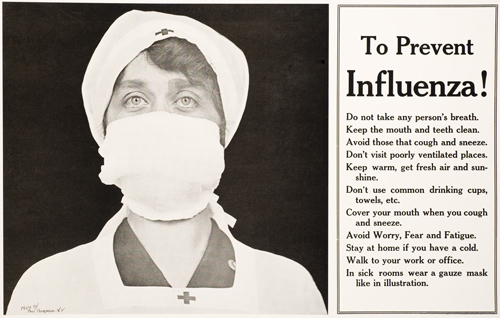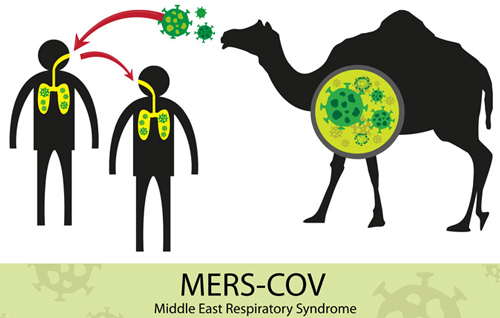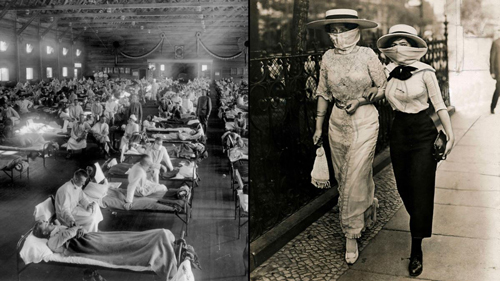COVID-19: How does coronavirus compare to other outbreaks?
Explore how COVID-19 compares to previous global pandemics in terms of infection numbers, fatalities, geographical reach and more
Since the first case of coronavirus on 1st December 2019, there have been over 2,685,000 cases of the disease worldwide, in over 213 countries.
You may remember previous pandemics that have occurred over the last decade or more, including swine flu, bird flu, and SARS, but it can be hard to figure out how coronavirus compares. Take a look at the London School of Hygiene & Tropical Medicine guide below to see how coronavirus compares to these outbreaks and historical pandemics that reshaped the global population.

What’s the impact of coronavirus?
At the time of writing this, the novel coronavirus or COVID-19 has :
– Infected 2,686,785 people
– Resulted in 184,681 deaths
– Affected 213 countries
– A Case Fatality Rate (CFR) of 6.8% globally, which means that 6.8% of people who contracted the disease have died. This differs according to location and age.
Coronavirus vs. flu (seasonal influenza) – reoccurring
Seasonal flu, or influenza, happens every year worldwide – typically between December and February. It’s difficult to estimate exactly how many cases there are per year as it’s not a notifiable illness (so it doesn’t have to be reported to local authorities), and most people with mild symptoms don’t even visit a doctor. Current estimates put the CFR (Case Fatality Rate) at 0.1%.
There are an estimated 3-5 million cases of severe flu each year, and around 250,000-500,000 deaths worldwide.
In most industrialized countries, deaths mostly occur in people who are aged 65+. Otherwise, it’s dangerous to pregnant women, children under 59 months, and people with chronic medical conditions.
Compared to seasonal flu, coronavirus:
– is less widespread
– has resulted in fewer deaths so far
– has a higher CFR (Case Fatality Rate)
– has no vaccine.
Coronavirus vs. bird flu (H5N1 and H7N9) – multiple outbreaks
There have been multiple outbreaks of bird flu (or avian flu) over the years, including the most recent in 2013 and 2016. These are typically from 2 different stains – the H7N9 virus and H5N1. The H7N9 epidemic in 2016 made up a third of all human cases reported but was still limited compared to both the coronavirus and other outbreaks/pandemics in this list. There have been 1,233 laboratory-confirmed cases of bird flu since the first epidemic. The illness has a Case Fatality Rate (CFR) of 20-40%, which means that 20-40% of cases resulted in death. While the rate is very high, the spread from person to person is limited which has, in turn, reduced the number of associated deaths. It’s also hard to track since birds don’t always die from the illness.
Compared to bird flu, coronavirus:
– is more widespread
– is spread more easily via human to human contact
– has a lower CFR
– has moved further from the original source.
Coronavirus vs. Ebola epidemic (EBOV) – 2013
The Ebola outbreak of 2013 was mostly concentrated in 10 countries, with Guinea, Sierra Leone, and Libera worst hit, but the very high CFR of 40% made this a serious concern for health officials worldwide. Between 2013 and 2016, there were 28,646 suspected cases and 11,323 deaths, but both of these figures are likely to be under-estimations. People who survived the initial outbreak may still fall ill months or even years afterwards, as the virus can lie dormant for extended periods.
A vaccine was introduced in December 2016 and is considered effective.
Compared to Ebola, coronavirus:
– is more widespread worldwide
– resulted in fewer deaths
– has a lower CFR
– has no known complications after recovery
– does not have an effective vaccine.
Coronavirus vs. camel flu (MERS) – 2012

Camel flu is a misnomer – while camels do have antibodies to MERS and may have been involved in spreading the disease; it was initially introduced to humans via bats. Like Ebola, it only affected a small number of countries (27), but 858 deaths from 2,494 laboratory-confirmed cases flagged this as a serious threat if measures weren’t put in place to contain it.
Compared to camel flu, coronavirus:
– is more widespread worldwide
– has resulted in more deaths
– has a lower CFR
– spreads more effectively between humans.
Coronavirus vs. swine flu (H1N1) – 2009-2010
Swine flu is the same strain of flu that wiped out 1.7% of the global population in 1918. It was declared a pandemic again in June 2009, and an estimated 11-21% of the world population contracted it. Fortunately, the CFR is considerably lower than in the previous pandemic, with 0.1-0.5% of cases resulting in death. 18,500 of these deaths were laboratory-confirmed, but estimates are as high as 151,700-575,400 globally. 50-80% of severe cases were found in people who had underlying conditions such as pregnancy, asthma, diabetes, and cardiovascular disorders.
Compared to swine flu, coronavirus:
– is less widespread
– has caused fewer deaths
– has a higher CFR
– has a longer incubation period
– affects young people less.
Coronavirus vs. SARS (Severe Acute Respiratory Syndrome) – 2003
SARS was identified in 2003 when it passed from bats to humans resulting in 774 deaths. There were ultimately 8,100 cases across 17 countries – by May, WHO reported a 15% CFR. The figure is likely closer to 9.6% when suspected cases are included, with a 0.9% CTR for people aged 20-29, growing to 28% for people aged 70-79. Like coronavirus, SARS had worse outcomes for males than females across all age groups.
Compared to SARS, coronavirus:
– is more widespread
– has resulted in more deaths overall
– has a lower CFR
– also has higher CFR in older age groups
– also has worse outcomes for males.
Coronavirus vs. Hong Kong flu (H3N2) – 1968-1969
The Hong Kong flu pandemic appeared on 13th July 1968 – by 1969 it had caused 1-4 million deaths worldwide. It was one of the biggest flu pandemics of the 20th century, but fortunately had a lower CFR than the outbreak of 1918 so caused fewer deaths overall. This may have been because people had developed immunity due to a similar outbreak in 1957, and thanks to improved medical care.
Compared to the Hong Kong flu, coronavirus:
– is less widespread
– has resulted in fewer deaths
– has a higher CFR.
Coronavirus vs. Spanish flu (H1N1) – 1918
The Spanish flu pandemic of 1918 was one of the deadliest disease events in human history. In the first year of the pandemic, the life expectancy in the USA dropped by 12 years, and within 24 weeks the disease killed more people than HIV/AIDS did in 24 years. Despite the name, the outbreak didn’t actually originate in Spain; wartime censors in Germany, UK, USA, and France suppressed reports of the disease, but Spain did not, giving the false impression that it was suffering more cases and deaths compared to its neighbours. This strain of H1N1 ultimately infected over 500 million people, or 27% of the global population at the time, and had a death toll of 40-50 million (although some estimates are as high as 100 million). By the end of 1920, 1.7% of the global population had died of this disease, with an unusually high mortality rate for young adults between 20 and 40 years old.

Compared to the Spanish flu, coronavirus:
– is less widespread
– has resulted in fewer deaths
– has a similar CFR
– is more dangerous for older age groups
– is less dangerous for people aged 20-40 years old.
Coronavirus vs. Black Plague – 1327
It took over 200 years for the European population to recover from the black plague, with some areas only reaching their pre-1327 populations in the 19th century. Estimates say that it reduced the world population by 25%, while Europe was even harder hit and lost 30-60% of its population. Details such as CFR and definite infection rates are difficult to know for certain given the time period, but it was one of the world’s deadliest pandemics.
Compared to the black plague, coronavirus:
– is less widespread
– has resulted in fewer deaths
– likely has a lower CFR.
Coronavirus vs. common cold (Typically Rhinovirus)
The common cold is the most common disease affecting humans – the average adult suffers from 2-3 colds per year, and the average child may catch 6-8 over the same time period. While there are over 200 virus strains associated with the cold, complications are rare and deaths are very unusual and only typically occur in the very old, very young, or immunosuppressed.
Compared to the common cold, coronavirus:
– is less widespread
– results in more deaths
– has a higher CFR
– is less common
– is less likely to affect young children.
How to Slow the Coronavirus Outbreak
Coronavirus is still an active outbreak, and it’s important to take steps to reduce both your chance of contracting it and the spread of disease if you do fall ill.
The WHO advice is to:
– Wash your hands frequently with alcohol-based hand rub or soap and water.
– Maintain social distancing (at least 1 metre/3 feet between yourself and anybody who is coughing or sneezing).
– Avoid touching your eyes, nose, and mouth.
– Cover your mouth and nose when you cough or sneeze, ideally with your bent elbow or a tissue.
– Seek medical care early if you have a fever, cough, and difficulty breathing.
– Take protection measures if you are in or have recently visited areas where coronavirus is spreading.
yogaesoteric
April 25, 2020
